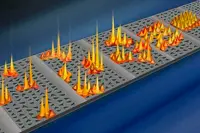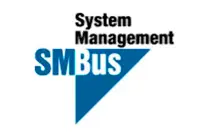Electronics News
Archive : 5 February 2015 год
 A breakthrough by researchers from UCLA, Columbia University and other institutions could lead to the more precise transfer of information in chips, as well as new types of optical materials for light emission and lasers.
A breakthrough by researchers from UCLA, Columbia University and other institutions could lead to the more precise transfer of information in chips, as well as new types of optical materials for light emission and lasers.
The researchers were able to control light by using random crystal lattice structures to counteract light diffraction. Technology that prevents diffraction and controls light more precisely, says the team, could lead to advances in optical communications.
To control light on the nanoscale, the researchers used a photonic crystal superlattice – a disorderly pattern with thousands of nanoscale heptagonal, square and triangular holes.
While it has been known that uniformly patterned holes can control the spatial diffraction to some extent, the researchers found that structures with the most disorderly patterns were best able to trap and collimate the beam and that the structure worked over a broad part of the infrared spectrum.
The effect, known as Anderson localisation, was first proposed in 1958 by Nobel laureate Philip Anderson. The new study is the first to examine transverse Anderson localisation in a chip scale photonic crystal media.
Researcher Pin-Chun Hsieh said the findings are completely counterintuitive because one might think that disorder would lead the light to spread out more. "This effect, based on intuition gained from electronic systems, where introduced impurities can turn an insulator into a semiconductor, shows unequivocally that controlling disorder can arrest transverse transport, and really reduce the spreading of light."
Author
Graham Pitcher
Source: www.newelectronics.co.uk
 The System Management Interface Forum (SMIF) has upgraded the System Management Bus (SMBus) specification to version 3.0. The upgrade is said to incorporate a number of revisions to ease implementation of the protocol, broaden its performance and harmonise the specification with the I2C and Power Management Bus (PMBus) specifications.
The System Management Interface Forum (SMIF) has upgraded the System Management Bus (SMBus) specification to version 3.0. The upgrade is said to incorporate a number of revisions to ease implementation of the protocol, broaden its performance and harmonise the specification with the I2C and Power Management Bus (PMBus) specifications.
Recognising that processors and custom logic now work faster, the 100kHz bus frequency offered by SMBus 2.0 is complemented with two further speeds of 400kHz and 1MHz in version 3.0. This, in turn, has required the high power electrical drive levels to be adjusted and reorganised. The data hold time specification has also been changed to match the I2C specification; a move which is said to recognise that most devices on the market manage data hold time in accordance with I2C.
Version 3.0 also includes the removal of a specification for minimum immunity to noise on the clock and data lines as the SMIF Working Group found that no supplier of SMBus devices or system OEM using SMBus has tested against the parameter.
The changes to the SMBus specification will also support further improvements in the PMBus protocol standard and these will be incorporated in the PMBus 1.3.1 specification.
The SMBus is a two wire interface through which system component chips and devices can communicate. In addition to reducing pin counts and supporting a flexible and expandable environment, SMBus delivers a range of functionality, such as saving states from a suspended event and the reporting of errors.
Author
Graham Pitcher
Source: www.newelectronics.co.uk

